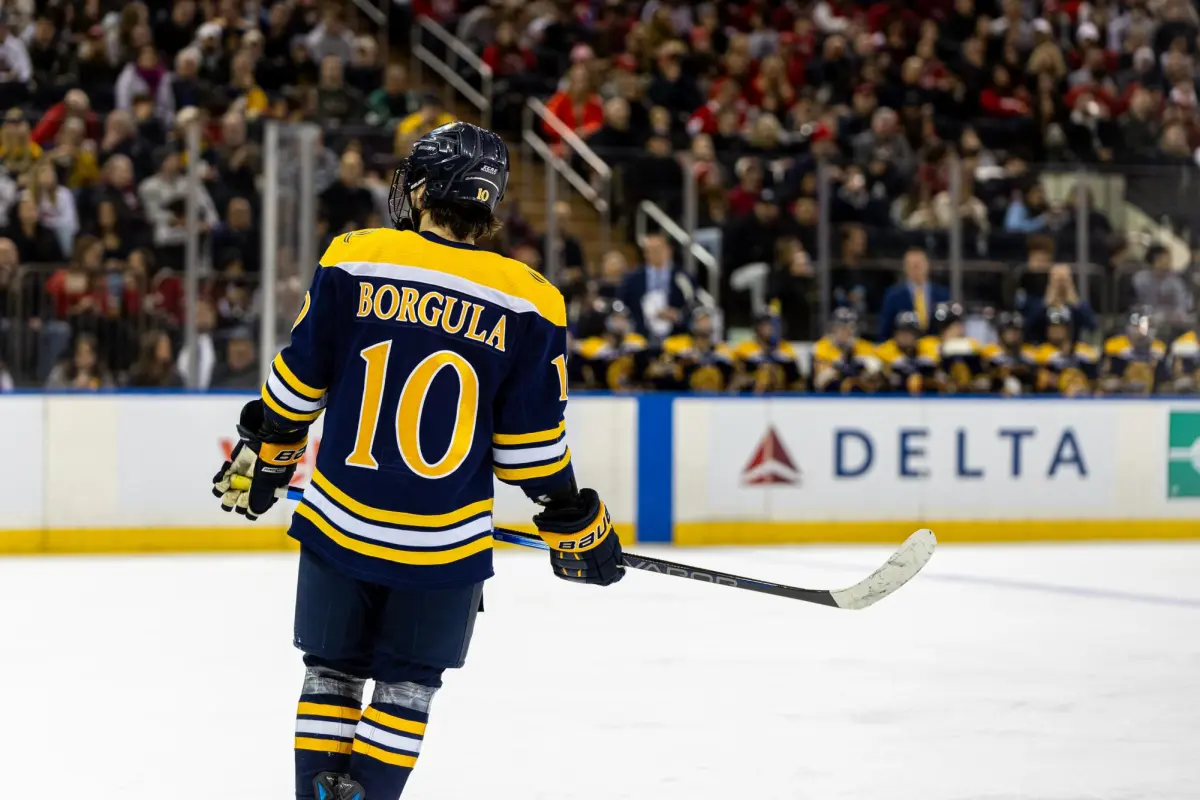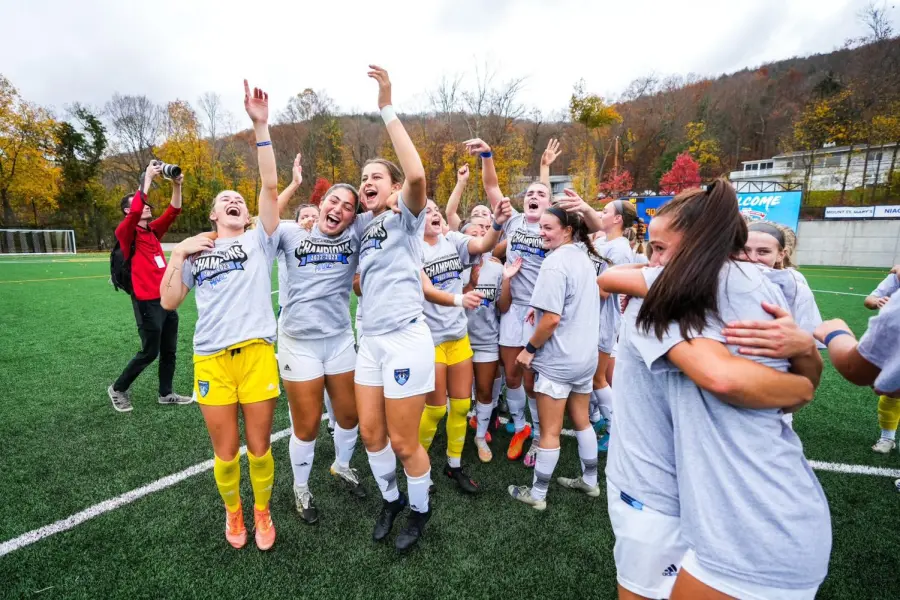Sports can be the epicenter of a lot of emotions, excitement, grief, pain, you name it. Any given fan could experience the highest of highs — a monster walk-off home run to win an important baseball game with the crowd roaring in shock and excitement. A fan could also experience the opposite flow of emotions — their favorite basketball team’s star player misses the game winning shot with the season on the line. These things happen all the time in sports, it’s such an unpredictable concept.
You never know what you’re going to see or hear.
This same phrase can be applied when it gets behind the scenes of these athletes. What these athletes do in preparation and the purposeful and intricate actions that they take help them to prepare mentally for their next game or big moment.
“One of the biggest things that people don’t ever really pay attention to in sports is the preparation,” said Dr. Brett Denkin, a licensed sports psychologist based out of Westport, Conn. “It’s easy to see the guy struggle in a batting slump from the TV screen, but what is he doing behind the scenes to fix it? Is he changing his mental approach to the game?”
This is where one of the most intriguing concepts in all of sports come into play – superstition, routine and ritual. Professional sports have been littered with these odd, and often hysterical behaviors for decades.
Speaking of odd and hysterical, former Major League Baseball outfielder Yasiel Puig was well known for hitting home runs, but he was arguably more well known for licking his bat in the batter’s box. This isn’t necessarily mundane for any baseball player, but according to Puig, he the bat gave him extra energy needed to hit the ball.
Michael Jordan, regarded as the greatest basketball player of all time, used to wear his powder blue North Carolina shorts under his Chicago Bulls shorts throughout his career, believing it would give him good luck. Leonard Fournette, the fourth overall pick in the 2017 NFL draft, wears his purple and gold pads from his college days at LSU under his jersey throughout every game. It’s often a stark contrast from the colorway on his pro jersey, but all he cares about is the comfort of having those pads on.
Wayne Gretzky, who’s widely accepted as the top pro hockey player ever, refused to cut his hair before a game. He also applied baby powder to his skates before hitting the ice. It may be hard to see how this could help an athlete’s performance, but it’s not all about what happens in the game.
“A lot of these behaviors stem from some from of performance anxiety,” said Dr. Denkin. “Doing these things either before or after the game can help to calm the athlete, get them in ‘the zone’ or even to shake off the rust after a bad game.”
These, often unusual, superstitions are not personal to the athlete. High school basketball games are notorious for these types of things. Any time an opposing player is shooting free throws, the home crowd is likely doing anything they can to try and make them miss.
“The superfans here love to wiggle their fingers as the court falls in silence, that’s been a staple in our gym for years,” said Bob Rodgers, the athletic director and boys basketball coach at Whitman-Hanson High School in Whitman, Mass.
When the home team is losing in a baseball game, fans are often seen all over the park flipping their caps inside out, then placing them on their head upside down. This is called the “rally cap” and in theory, it sounds wacky. But fans will do anything they can to try and get the outcome they’re looking for, much like the athletes.
One Quinnipiac baseball player absolutely needs to listen to his country music playlist before any game, or his entire day will be thrown off.

“I listen to Riley Green before every game,” said Johnny Knox, a graduate infielder for the team. “I have a whole playlist filled with country [music] that I have on before and after my games. It just puts me where I need to be mentally, so I’ve continued to do it.”
While this may not be the most outlandish thing done by an athlete, Knox admits that he’s seen weirder.
“I’ve seen people spit on their batting gloves at the plate,” said Knox. “I’ve seen guys that slap themselves in the face before running onto the field. I’ve seen some pretty wild things, but they all have a purpose for the people that do them. These things get them ready to play, so I guess it’s worth it to have something like that to do, as long as it works.”
According to a study by Cognition Brain Behavior, around 55% of athletes at any competitive level participate in a routine or superstition, while close to 70% believe that their rituals had an impact on their performance. While there’s still no proven truth that these actions directly impact performance, it’s the belief and comfortability athletes get that allow them to potentially play better.

“My teammates and I juggle together before every game. We’ve been doing it since I got here and it just gets me prepared to play,” said Milena Branco, a junior midfielder for Quinnipiac’s soccer team. “If there’s a time where we don’t do it, I’m thinking about it all game. If I make a mistake, I almost wonder if that’s why.”
Women’s soccer at Quinnipiac has been on a roll the last few years, winning back-to-back MAAC titles in 2022 and 2023, and finishing as the runner-up in 2024. While the success likely isn’t directly linked to any superstitions around the team, the whole roster is aware of it.
“I grew up playing with a girl who would meditate on the field before every game,” said Branco. I also used to play with someone who would roll her jersey sleeves up with her shorts rolled up too. I never understood why, but I guess it made her feel comfortable in game.”
The sport of hockey is one of the most superstitious sports in the world, and Gretzky’s antics are just a fraction of what you can see around the game.
First-year forward Tyler Borgula of the Quinnipiac Bobcats ice hockey team is one of the most superstitious athletes at the university. What’s unique about him is that he doesn’t take part in one or two pre-game actions, he plans his day out ahead of time and he sticks to the same schedule every game day.

“I’m waking up the same time every game day, around 8:00 or 8:30 a.m.,” said Borgula. “We’ll go to the rink and eat our breakfast. I get the same thing every day. Then we’ll pre-game skate.”
Borgula, along with the rest of the hockey team, gets Whitney Donut catered to the arena for game days. He goes for the classic bacon, egg and cheese, something he admits is pretty basic, but it puts him in the right headspace. At lunch, he’ll eat at Eli’s, a nearby restaurant in Hamden. He gets chicken and pasta with butter, something he’s done for the last four years.
Much like Knox, he also listens to a playlist before every game, but with the same songs in the same order. The playlist mostly consists of rap artists Meek Mill, Travis Scott, Gunna and Eminem. However, he admits that sometimes a song gets skipped, or even swapped out where a new song will take its place.
“Following a strict regiment can help a given athlete keep structure, which in turn limits out of character behaviors,” Denkin said. “If you don’t play great the next game, and it really eats away at you, you can always fall back into a comfortable environment that you’re used to, and in the environment you feel confident and familiar.”
This kind of routine runs deep, and Borgula admitted that he’s been doing this same routine, with a few minor additions and subtractions along the way, for over two years now.
“My first year of juniors is when I kind of started to realize that I needed to build a routine instead of just showing up. Moving away from home and being on my own definitely helped me develop it,” said Borgula.
However, some days he’ll miss a step of his routine, and this small missed step truly takes a toll on his mind.
“Some days I’ll forget to play the same song or something like that, and that kind of messes with me, which it shouldn’t. I guess it’s just my personal superstition, but I try not to let it get to me too much,” he said.

Borgula also cited that he tapes his stick from heel to toe, but will change it up if he deems that he had a bad game, switching to toe to heel.
“When I do this [routine], I truly think that it helps me and keeps me staying focused for the games,” the Michigan native said.
He also labeled pro athletes like Jordan and others as an inspiration for his routine.
“I’ve watched so many documentaries on Kobe, or Lebron and Jordan, and even watching the NHL day in and day out. These guys all have their own thing to be able to perform to their best, and I think that’s what I want to strive towards,” said Borgula.
This routine has worked out rather well for Borgula in his first year at Quinnipiac. He netted 12 goals and assisted on 13 more for 25 points in 38 games played.
“Over time, these things just melt into athletes’ brains,” said Denkin. “These oddities you see on the TV almost always start way before the pros. It’s something that athletes carry on with them for years, because it makes them feel comfortable in uncomfortable situations.”
The old saying “feel good, play good” is seemingly accurate for Borgula, Branco, Knox and a multitude of other athletes across the globe across all levels.
From the fan who’s sitting in their recliner at home watching a game, these things may always seem like edgy, selfish things that players do to attract attention from the press, but in reality, it’s much deeper than that. Forgetting to do the things that they do before or after every game or match can really affect the mindset of an athlete.
“As long as these behaviors aren’t harmful to anybody, these are great for sports. Having a personal tick that gets your body to get serious when you need it to is a fascinating thing, and I personally love to see these all throughout sports,” Denkin said.

